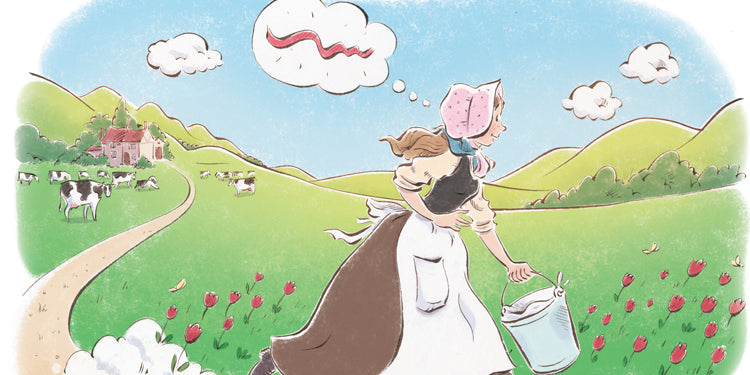Last week, I featured the Zoozoo Animal World Series to teach different verb tenses in the classroom (read the article here ). This week, I’ll be presenting ways to incorporate fictional narratives into discussions about time!
Understanding different verb tenses is not only important for grammatical purposes— recognizing temporal word forms is integral to understanding any narrative . The Common Core Standards also expects first-grade students to “use verbs to convey a sense of past, present, and future (e.g., Yesterday I walked home; Today I walk home; Tomorrow I will walk home)” ( CCSS.ELA-LITERACY.L.1.1.E ).
The Fables and the Real World Series showcases fictional fables that teach universal life lessons. The Milkmaid and Her Pail utilizes all three verb tenses—past, present, and future—in its story. Nevertheless, it remains at Guided Reading Level G and stays accessible to your students!
Before reading:
- Introduce the book to your students. Do you think this book is fiction or nonfiction? Why do you think so?
- Tell them that you’ll be focusing on time and the sequencing of events during today’s reading.
During reading:
Page 2:
- Discuss the opening phrase “once upon a time.” What is the meaning of this phrase? What does it tell us about when the story takes place?
- Based on “once upon a time,” do we expect the story to be told in past, present, or future tense? Examine the verb in the sentence to confirm your students’ prediction.
Page 5, 7, and 9:
- Identify the two different verb tenses on the page. Why does the milkmaid speak in the future tense? (Because she is fantasizing about things that she can buy in the future.)
Page 6 and 8:
- Identify other words on this page that are related to time. (“Then,” “soon.”)
Page 10:
- Identify the two different verb tenses on the page. Which word signals that the verb is in future tense? (“Will.”)

After reading:
- Return to the farmer’s dialogue on page 3, 15, and 16.
- What tense does the farmer use when he speaks? (Present tense.)
- Why does he speak in present tense? Explain that when the farmer was speaking, it was a “now” or a present in which the story was taking place. For your students, though, that “now” was “once upon a time,” and the story has already happened. The story is simply recording what the farmer said in that moment, so it is in present tense. [Note: the concept of relative temporal perceptions is quite abstract and related to “acknowledging differences in the points of view of characters” (CCSS.ELA-LITERACY.RL.2.6), so don’t worry about stressing this point.]
- Examine the second sentence of dialogue on page 3. What tense does the farmer use and why?
Familiarity with different verb tenses serves as a powerful tool for fiction reading. With a keen sensitivity to words that trigger time, students will develop greater comprehension of story timelines and event sequencing. Whether you’ve taught, teach, or will teach verb tenses to your students, The Milkmaid and Her Pail is a great addition to your classroom library!
~~~
Click the image below to download an informational sheet about the Fables and the Real World Series, which includes the book featured in this blog post.
~~~



















































![6 Fun and Easy Activities to Practice Sequencing [Grades K-1]](http://www.hameraypublishing.com/cdn/shop/articles/Red_Typographic_Announcement_Twitter_Post-5_bf1ae163-a998-4503-aa03-555b038d1b76_600x.png?v=1689961568)
![Leveraging Prior Knowledge Before Writing and Reading Practice [Grades 1–2]](http://www.hameraypublishing.com/cdn/shop/articles/Red_Typographic_Announcement_Twitter_Post-4_600x.png?v=1689961965)